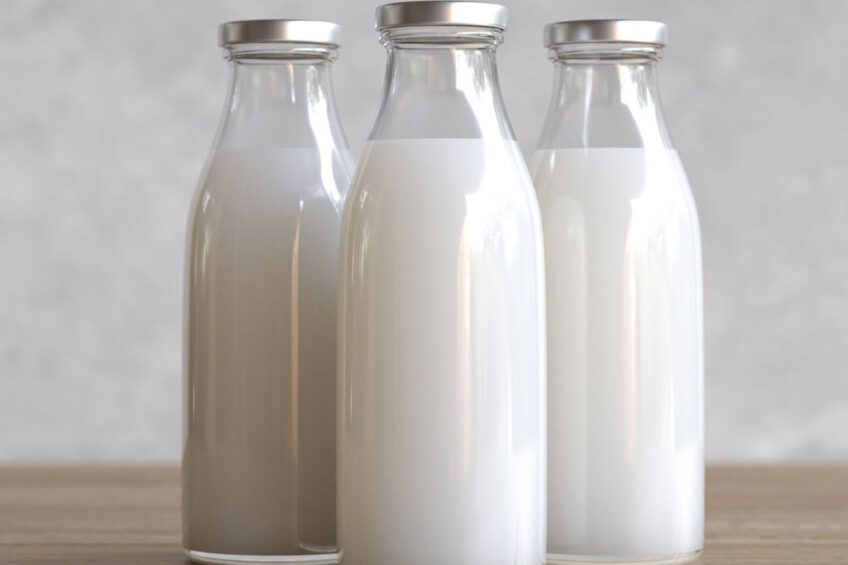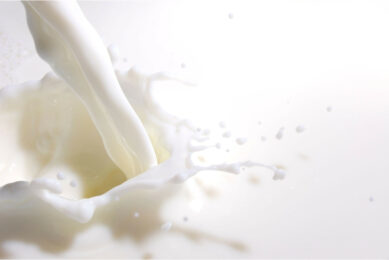How packaging influences milk flavour

A new study published in the Journal of Dairy Science demonstrates that paperboard cartons and related packaging materials which are commonly used in school meal programmes do not preserve milk freshness.
The main concerns for the dairy industry regarding pasteurised fluid milk are preserving the quality and safety of the final product while preserving the characteristic pleasant flavour of milk.
The characteristic flavour-active compounds of pasteurised fluid milk are created during thermal processing. However, the flavour of milk has changed over time due, in part, to changes in the packaging used to transport milk to consumers. For example, light oxidation from transparent containers, as well as scalping and migration from different packaging types, affect the flavour of milk and have led to consumer dissatisfaction.
Few studies have addressed the effects of package material in the absence of light on contributions to fluid milk flavour. In this interesting study, researchers compared the sensory and chemical properties of fluid milk packaged in paperboard cartons, low-density polyethylene (LDPE), high-density polyethylene (HDPE), polyethylene terephthalate (PET), linear low-density polyethylene (LLDPE), and glass.
Lead investigator MaryAnne Drake, PhD, of the North Carolina State University Department of Food, Bioprocessing and Nutrition Sciences, Raleigh, NC, USA, explained that “milk is more susceptible to packaging-related off-flavours than many other beverages because of its mild, delicate taste”.
Besides light oxidation, she says that “milk’s taste can be impacted by the exchange of the packaging’s compounds into the milk and by the packaging absorbing food flavours and aromas from the surrounding refrigeration environment”.
Quantifying the impact of packaging
To quantify the flavour impacts of packaging, the researchers examined pasteurised whole and skim milk stored in 6 x 230 ml containers (plus 50 ml headspace): paperboard cartons, 4 plastic-made containers (LDPE, PET, HDPE and LLDPE), and glass as the control. The milk was stored in total darkness to control light oxidation and kept cold at 4°C. The samples were tested on the day of first processing, and at 5, 10, and 15 days after.
A trained panel examined the sensory properties of each sample, and the research team conducted a volatile compound analysis to understand how the packaging was intermingling with the milk. Finally, the samples underwent a blind consumer taste test on day 10 to see whether tasters could tell any difference between milk stored in the paperboard carton or the plastic containers compared with milk packaged in glass.
Packaging material on milk flavour
The results showed that package type does influence milk flavour, and skim milk is more susceptible to flavour impacts than whole milk. Paperboard cartons and LLDPE containers preserved milk freshness the least due to the paperboard’s absorption of milk flavour and the transfer of paperboard flavour into the milk compared with milk from a glass, PET, HDPE, or LDPE.
Milk packaged in paperboard cartons, in fact, showed distinct off-flavours as well as the presence of compounds from the paperboard. The flavour difference was attributed to the high permeability of paperboard cartons and LLDPE, as high permeability of packaging has been shown to increase stale flavour and decrease overall flavour acceptability.
Consumer difference tests were consistent with trained panel and volatile compound analysis, suggesting that milk packaged in HDPE, PET, or glass in the absence of light exposure have no discernible sensory differences by day 10 post-processing. In contrast, milk filled into paperboard cartons was differentiated by consumers compared to milk filled in a glass container.
Volatile compounds and sensory attributes
Skim and whole milk packaged in paperboard cartons or LLDPE had higher concentrations of packaging/refrigerator taint volatile compounds styrene, acetophenone, and 2-ethyl-1-hexanol than milk filled into LDPE, HDPE, PET, or glass. Styrene concentrations increased with storage across all packaging types except for the glass package. Styrene is a marker for the degradation of plastic barriers over storage time and is present in refrigeration environments where it can easily migrate into milk through permeable containers such as cartons and LLDPE.
Styrene is “generally recognised as safe” by the Food and Drug Administration, though it is documented to cause a “chemical/ plastic/stale” off-flavour in most food products when at detectable levels. Studies show that acetophenone causes “stale” off-flavours in milk while 2-ethyl-1-hexanol has a “chemical/cleaning agent” aroma.
Limonene and p-cymene increased in skim milk packaged in LLDPE or paperboard cartons compared to LDPE, HDPE, PET, and glass. Limonene is a compound found in fluid milk and is also used as a metric for the assessment of environmental air quality. P-cymene is a degradation compound of limonene and correlates with the increase of limonene.
The researchers stated: “The increased concentrations of limonene and the further degradation into p-cymene may be due to the higher permeability of LLDPE and paperboard cartons.”
Hexanal has been associated with off-flavour in food products packaged in paperboard and cardboard. In the current study, both skim and whole milk filled into paperboard cartons had increased levels of hexanal compared with milk in other packaging types. “This difference in hexanal concentration may signify the degradation of the surrounding paperboard packaging, which may increase hexanal concentrations in milk over time,” they said.
Correlation analysis showed that paperboard/cardboard flavour and the volatile compound hexanal were correlated (R2 = 0.84). Refrigerator stale flavour was correlated with the volatile compounds styrene (R2 = 0.88), p-cymene (R2 = 0.73), acetophenone (R2 = 0.71), and 2-ethyl-1-hexanol (R2= 0.82).
The future of milk packaging
It was concluded that off-flavours due to packaging and refrigeration environment are detected in fluid skim and whole milk over refrigerated storage time, with milk packaged in paperboard cartons and LLDPE having the highest intensities of off-flavours due to permeability and migration, with the off-flavours present by day 0 in skim milk. The observed off-flavours in milk detected by the sensory analysis are correlated with increased specific migration of volatile compounds.
Paperboard cartons are the most widely used packaging type for school meal programmes in the United States, and probably most parts of the world, so these findings are relevant for the consideration of how children consume and enjoy milk.
“These findings suggest that industry and policymakers might want to consider seeking new package alternatives for milk served during school meals,” said Drake. Over time, the consequences of using milk packaging that contributes significant off-flavours may affect how young children perceive milk in both childhood and adulthood.
Join 13,000+ subscribers
Subscribe to our newsletter to stay updated about all the need-to-know content in the dairy sector, two times a week.










